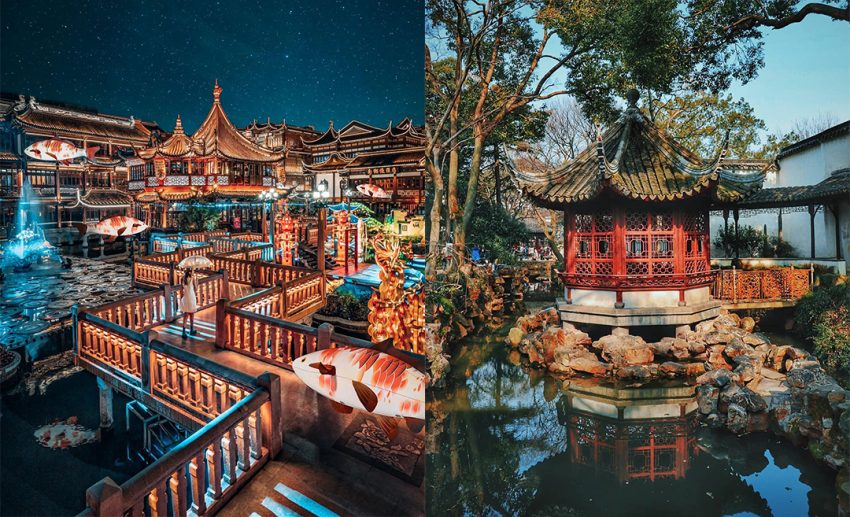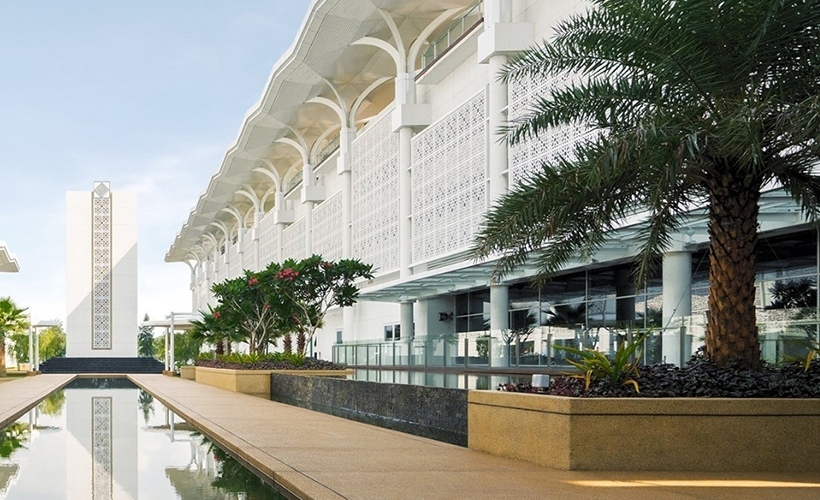
Without a doubt, exploring gardens is a calming experience that will make any busy bee stop and smell the flowers. When most Malaysians think about gardens, we picture our grandmother’s backyard filled with herbs and vegetables or bare-bones, unkept tamans peppered around residential areas. But did you know that in the East, gardening is actually a revered art form?
What are oriental gardens?
Oriental gardens feature manicured landscapes with influences of Chinese origin. These kinds of gardens tend to be more naturalistic and are built according to certain standards of aesthetics and philosophical ideas, whereas Western gardens can be deemed more performative and over-the-top (think the Gardens of Versailles).
So what’s unique about oriental gardens? Even though each country in Asia has its own cultural influences, the universal experience one gets when visiting an oriental garden is akin to stepping into an idyllic space where nature and mankind harmoniously coexist. Here are our favourites.
Malaysia
Selangor-Japan Friendship Garden, Shah Alam
Situated at Shah Alam Alam Lake Gardens is the Selangor-Japan Friendship Garden. With several zen-invoking features immaculately placed within the garden, it offers residents a uniquely Japanese garden environment that can only be found in Japan. You can find koi ponds, a rock garden, a reflexology garden, and water features here.
China-Malaysia Friendship Garden, Putrajaya
Albeit small in size, this garden is a commemorative symbol of Malaysia’s diplomatic relationship with China, and is nestled inside the Anjung Floria Garden. Highlights here are the landscaped limestones that mimic the scenery of mountains and cliffs and two 200-year-old lion artefacts imported from China guarding the garden’s doors. There’s even a moon gate located in this garden that might transport you to another dimension! Entrance is free, but if you want to conduct a photoshoot, a fee will be imposed.
China
Humble Administrator’s Garden, Suzhou
The Humble Administrator’s Garden is an oasis that was originally constructed in the Ming Dynasty for a famous poet as a retirement lodging. This garden prides itself as one of the most revered Chinese classical gardens still standing. With Suzhou architecture and flowing water as a theme to this garden’s design, it is also the Chinese government’s pride and joy as it holds the title of a Cultural Relic of National Importance.
Sit by the Drifting Fragrance Hall to take in the floral scent of the lotus flowers, or admire the crimson red phoenix trees dotted around the Secluded Pavilion of Phoenix Tree and Bamboo Pavilion. The harmonious scenery in the Humble Administrator’s Garden will soothe any weary adventurer’s mind.
Yu Garden, Shanghai
Yu Garden is a four-centuries-old, calming terrace that is situated in urban Shanghai. There are many ancient wonders to explore here, but the real treasure of this garden is the Exquisite Jade Rock that is located in the Hall of Jade Magnificence.
As the garden attracts volumes of tourists, you can opt to enjoy a quieter stroll during a weekday. After exploring all of the six scenic areas, you can flex your bargaining skills at the Yuyuan bazaar located adjacent to the garden for Chinese street food and souvenirs.
Japan
Saihō-ji, Kyoto
Stepping into Saihō-ji is akin to stepping into an enchanted forest. The famed temple is also known as Kokedera, which directly translates to Moss Temple. You guessed it, the highlight of the temple’s gardens is the lush moss that grows on the temple’s grounds! Resembling nature’s blanket, it’s a sight to behold for many.
During your visit, you get to participate in the Buddhist practice of copying sutras called shakyo. The garden grounds are closed yearly during winter for maintenance, but visitors get to experience a meditation session in the main hall. Entry to the temple ground’s is fairly tricky — you’ll need to plan ahead (two months before your visit date) and send in a written reservation via mail.
Ryoan-ji, Kyoto
Located north of Kyoto is Ryoan-ji, a temple that houses what is considered to be one of Japan’s finest examples of karesansui (a traditional rock garden). To fully appreciate the idyllic view of the rock garden, visitors are advised to view the landscape at a seated position from the Hojo (head priest’s former residence). If you’re lucky, you can sometimes spot the residing monks raking the white gravel stones surrounding the 15 rocks.
Other than the rock garden, the highlights of this temple are the Kyōyōchi Pond that bursts into a myriad of vibrant colours during autumn, and a restaurant that serves Kyoto’s speciality dish, yudofu (boiled tofu).
Tenryu-ji, Kyoto
This six-centuries-old temple is home to one of the most beautiful gardens in and around the Arashiyama district. Tenryu-ji is the first ranked amongst the five great Zen temples in Kyoto and boasts an impressive sightseeing course. When exploring the temple grounds, stop by Sogenchi Garden to rest your weary feet.
What makes this garden unique is that it has retained its same form when it was built in the fourteenth century. With a soaring view of Mount Arashi as the backdrop, you’ll be able to enjoy a serene ambience no matter what season you choose to visit.
South Korea
The Garden of Morning Calm, Gyeonggi-do
This arboretum takes inspiration from South Korea’s nickname as the Land of The Morning Calm. Located amidst the bustling province of Gyeonggi, it’s a peaceful retreat for locals and tourists alike. The garden is open all year round, but it’s most famed for its winter sights as the annual Lighting Festival (from December to March) draws in throes of visitors who come to admire the neon-lit landscape. It’s utter bliss!


